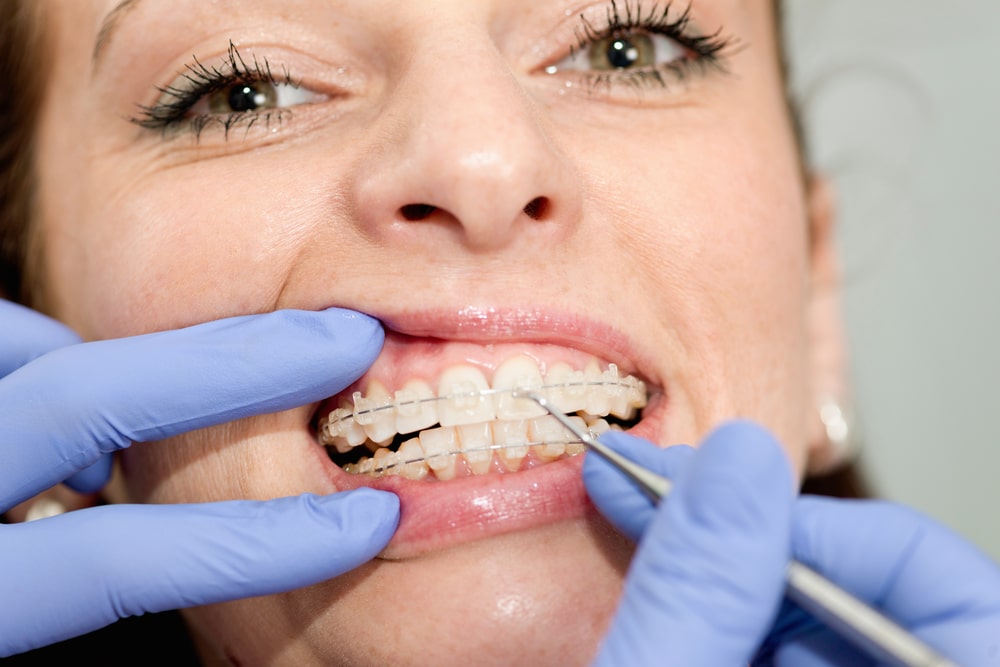A Biased View of Legacy Orthodontics
Table of ContentsThe smart Trick of Legacy Orthodontics That Nobody is Talking AboutThe Best Strategy To Use For Legacy Orthodontics9 Easy Facts About Legacy Orthodontics ExplainedHow Legacy Orthodontics can Save You Time, Stress, and Money.The Of Legacy Orthodontics
In enhancement, we supply adjustable therapy routines, adaptable repayment alternatives and an enjoyable, pleasurable experience.An orthodontist is a dental expert trained to detect, stop, and deal with teeth and jaw irregularities. They correct existing problems and are trained to determine problems that may establish in the future. Orthodontists deal with people of all ages, from children to grownups. People usually connect an excellent smile with great health.
Malocclusion, or misaligned teeth, can lead to oral issues, including dental cavity, gum tissue disease, and tough or excruciating chewing. Not every person is born with straight teeth. If you have a negative bite or huge spaces between your teeth, you may desire to speak with a dental practitioner concentrating on orthodontic care.
The Legacy Orthodontics PDFs
( Photo Credit Score: DigitalVision/Getty Images) Orthodontists make use of dealt with and detachable oral devices, like braces, retainers, and bands, to transform the placement of teeth in your mouth. Orthodontic therapy is for dental irregularities, including: Uneven teethBite issues, like an overbite or an underbiteCrowded teeth or teeth that are as well far apartJaw misalignmentThe goal of orthodontic treatment is to boost your bite.
A healthy bite ensures you can eat, chew, and speak appropriately. While you could consider orthodontists as mainly for youngsters or teenagers who need braces, they can correct oral troubles at any age. Orthodontists attend college, oral college, and orthodontic college. After graduation, they spend 2 or 3 years in an orthodontic residency program.
All orthodontists are dental professionals, yet not all dental professionals are orthodontists. Orthodontic residency programs supply extensive, focused instruction for oral experts. They concentrate on two areas: Just how to effectively and safely relocate teeth Exactly how to properly lead growth in the teeth, jaw, and faceOnce an orthodontist has finished training, they have the choice to come to be board accredited.
The Best Strategy To Use For Legacy Orthodontics
Imbalance, or malocclusion, is one of the most common factor individuals see an orthodontist. It is hereditary and is the outcome of dimension distinctions between the top and reduced jaw or in between the jaw and teeth. Malocclusion leads to tooth overcrowding, a twisted jaw, or uneven bite patterns. Malocclusion is generally treated with: Your orthodontist attaches metal, ceramic, or plastic square bonds to your teeth.
Some individuals need a headgear to assist relocate teeth into line with pressure from outside the mouth. A retainer is a custom-made gadget that maintains your teeth in area.
They're most often used on kids. They can develop added room in the mouth without having to draw teeth. If you have a significant underbite or overbite, you could require orthognathic surgery (additionally called orthodontic surgical treatment) to lengthen or shorten your jaw. Orthodontists use wires, medical screws, or plates to sustain your jaw bone.
You might require to see an orthodontist if you have: Crowding or not sufficient space for every one of your teethOverbite, when your upper teeth come over your bottom teethUnderbite, when your base teeth are as well much forwardSpacing or concerns with gapsCrossbite, which is when your top teeth fit behind your bottom teeth when your mouth is closedOpen bite or a vertical space between your front base and upper teethMisplaced midline, when the facility of your bottom and upper teeth do not line up Correcting a dental malocclusion can: Make biting, chewing, and talking easierImprove the symmetry of our face and your total appearanceEase pain from temporomandibular joint conditionsDifferent your teeth and make them simpler to clean up, assisting protect against dental cavity or dental caries It's typically a dental practitioner that initially notices misaligned teeth during a routine test.
Our Legacy Orthodontics Ideas

During your first orthodontic consultation, you'll likely have: An oral examPhotos taken of your face and smileDental X-raysPanoramic (360 level) X-rays of your face and headImpressions to develop mold and mildews of your teethThese tests will help your orthodontist know just how to continue with your therapy. orthodontist. An orthodontist is a dental practitioner that's had training to treat your teeth and jaw
An orthodontist is concentrated on your bite, so something like a damaged tooth would certainly be managed by a dental professional. Orthodontists are focused on your bite, or the method your teeth fit together, and the straightness of your teeth.
Ever asked yourself how celebrities constantly seem to have flawlessly aligned teeth? The answer typically hinges on the proficient hands of an orthodontist. But what specifically does an orthodontist do? Orthodontists are oral experts who focus on remedying abnormalities in the teeth and jaws. Their knowledge surpasses simply creating a lovely smile; it includes boosting your total dental health and wellness and function.
About Legacy Orthodontics

While dental braces are one of the most frequently identified orthodontic therapy, orthodontists have a varied toolkit at their disposal. The certain approach picked relies on the intensity of the case, the individual's age, and specific choices. These tried-and-true dental braces utilize a system of braces adhered to the teeth and linked by cords.
Clear aligners, like Invisalign, are a popular alternative for clients seeking a more discreet therapy alternative. These removable trays are tailor-made to gradually change the teeth's position. Headgear might be used in combination with braces or aligners to use added targeted pressures, especially for dealing with jaw disparities. In cases of narrow jaws, palatal expanders can be utilized to create space for correct tooth positioning.